
Newsletter - June 2015
Greetings from Robbi and Jim
A warm welcome to all of the members of our Aroma Tours Newsletter in over 30 countries around the world.
Robbi and I are now in Provence taking a short break before beginning our Aroma Tours
adventures in this beautiful region with our Heart of
Provence Tour.
We have already completed three wonderful tours in Spain, Dordogne and
Turkey and with happy hearts we are looking forward to sharing many more memorable
moments with our guests, more than half of whom
are joining us once again.
We feel truly blessed to be able to share our
passion for the places and experiences that we love with wonderful people
from around the world and as we start to throttle back on the number of
tours we are offering it becomes even more poignant for us.
There are still a few places left for this year in Tuscany, northern Italy and Bali and we look forward to welcome the last few Aroma Travellers for this season shortly.
Next year's season is destined to be our best ever with most of our tours already two thirds full, several others down to the last few places and Turkey fully booked with a waiting list.
As the saying goes "Carpe Diem" and if you would like to seize the day and join our Aroma Travellers this year or next we invite you to visit our information request page for more information or our booking request page to reserve your place.
Aroma Travellers Our Thanks
Without doubt, the main reason that we continue to grow and flourish, is the on-going support we receive from our past Aroma Travellers.
Last year we enjoyed an outstanding number of returning Aroma Travellers and new guests who joined us because of direct referrals - over 63% of our guests! A similar result is occurring this year as well.















 |
For Robbi and myself, it is such a great delight to welcome back so many good friends and to see our Aroma Tours continuing to flourish.
We would also like to give our heart-felt thanks to all of you who continue to support us with your kind words and referrals as you spread news of our tours and retreats amongst your friends.
Robbi and I also greatly appreciate your wonderful words of thanks, it means so much to us to know that we have shared a special time with you during our journey together.
If you have not already done so, please take a peek at our Guest Comments from 2014
Musings on Provence
Robbi and I have just arrived in Provence in the south of France and are reveling in the beauty and charm of this glorious region.
Thus inspired Robbi put fingers to keyboard and wrote the following musings about being back in Provence - our other home.
You know you're in Provence if�
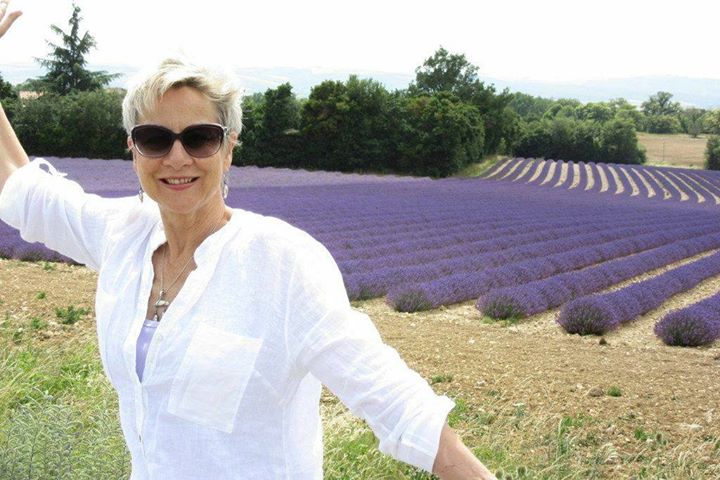
- The sky is blue and cloud free because of gusts of wind called Le Mistral
- The perfume of lavender, thyme and rosemary fills the air
- The cicadas sing their mating song as soon as the weather turns warm
- The open markets teem with exquisitely beautiful things and delicious fare
- The sun beckons you to sit under the shade of a majestic plane tree
- Musicians play in the squares and narrow cobblestone streets
- Cafe terraces fill with groups of friends at aperitif time
- The incomparable light spills into your heart
- And the exuberant beauty of summer fills you with joy
Memorable Photos from Flavours of Spain 2015
Time is short while we are "on the road" but we though you would enjoy a few images of the wonderful time we enjoyed with our guests during our Flavours of Spain Tour this year.
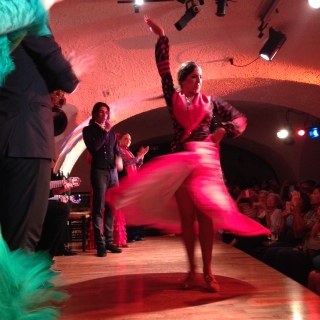  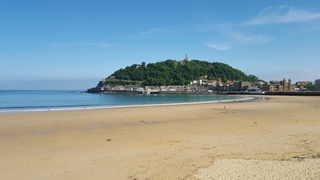 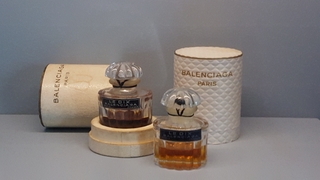 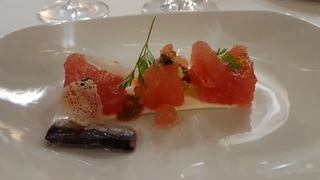 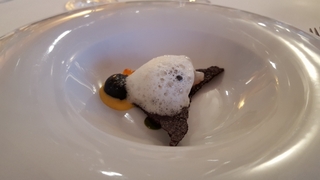 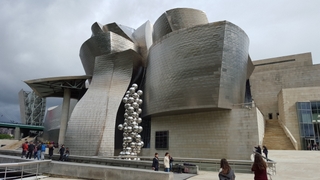 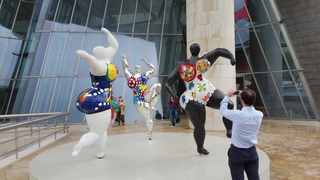 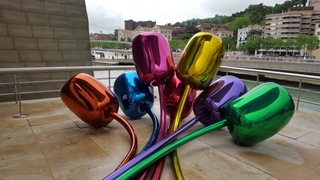 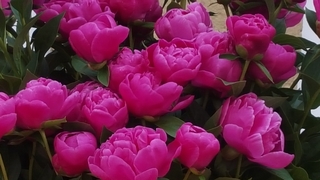 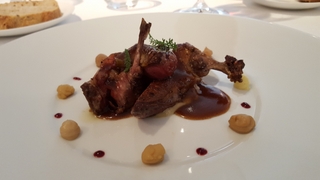 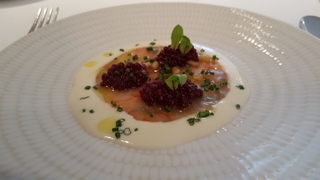 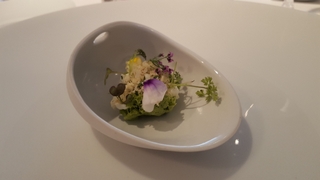 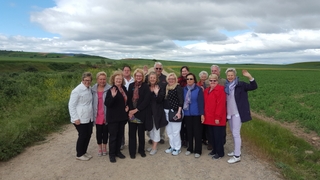 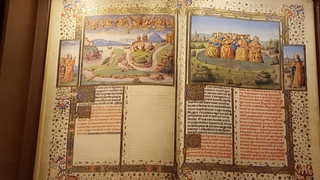 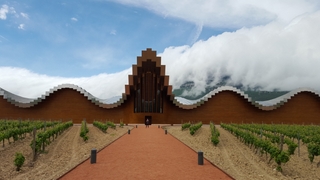 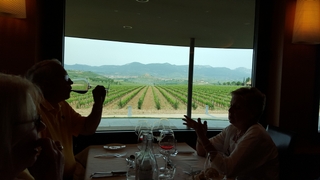 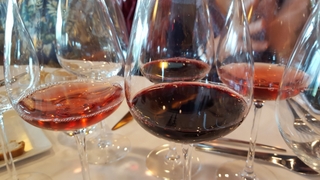 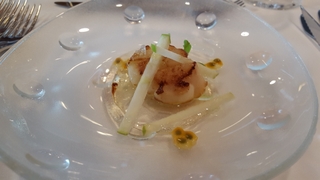 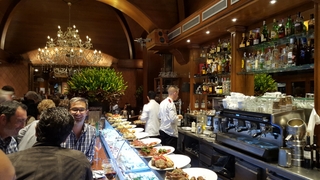 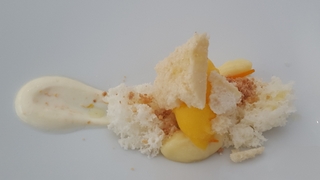 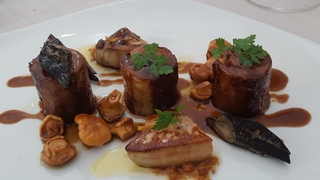 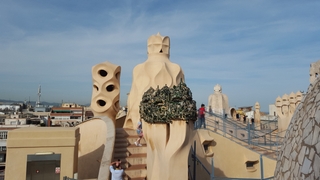 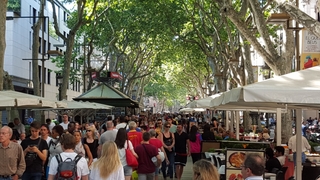 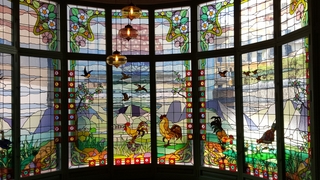 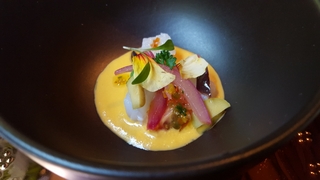 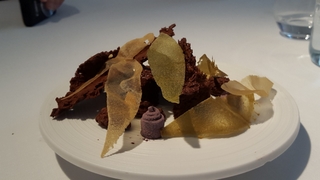 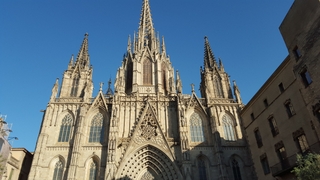 |
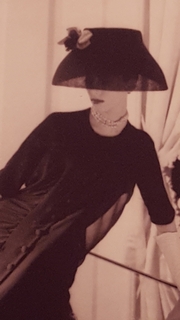 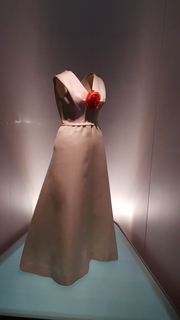 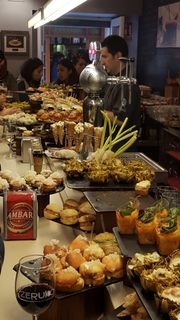 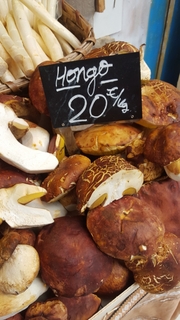 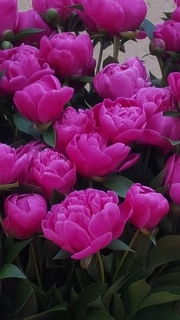 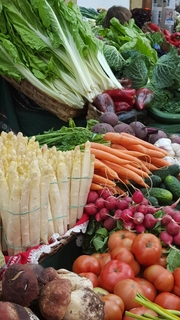 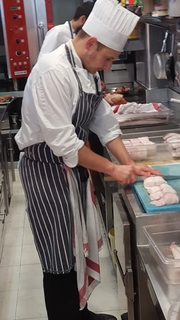 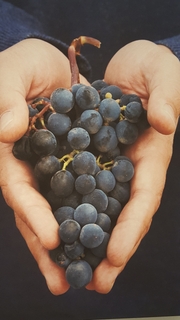 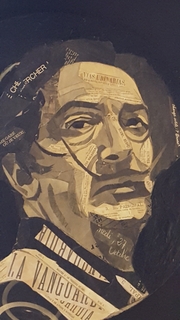 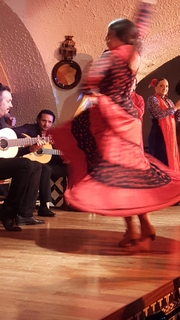 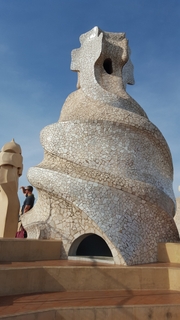 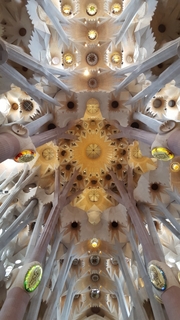 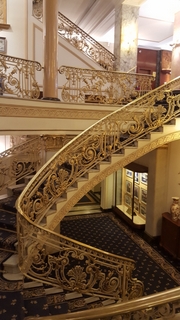 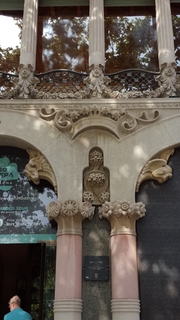 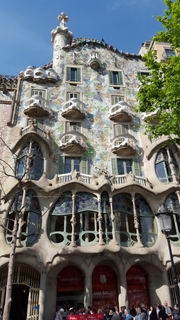 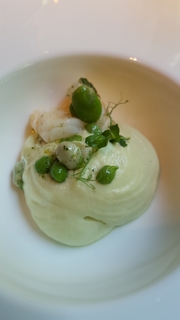 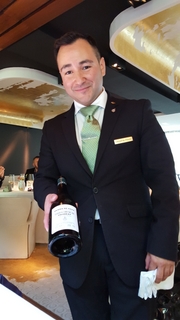 |
What a delightfully delicious time we shared in Spain and Robbi and I loved the generosity of sprit, curiosity and sense of fun of our guests.
The perfect start to our 2015 season.
We look forward to sharing more lovely images of our travels in our next newsletter.
Our Current Booking Status
Robbi and I look forward to welcoming the last few Aroma Travellers for this year and invite you to join us this September for one of our Italian journeys in Tuscany or northern Italy or to our delightful Bali Women's Retreat
Meanwhile our 2016 continuing to fill and is clearly destined to be our mbest season on record by far.
The current booking status of our 2015 tours at the time of this newsletter is:-
| 2015 Tour Season. | |
|---|---|
|
|
|
|
|
|
|
|
|
|
|
|
Bookings for our 2016 season are continuing to be outstanding with most of our tours now two thirds full or more, thanks to our guests ( mainly return travellers and their friends ) making there plans well ahead of time.
The current booking status of our 2016 tours at the time of this newsletter is:-
| 2016 Tour Season | |
|---|---|
|
|
|
|
|
|
|
|
For detailed information about any of our tours please visit our information request page and if you would like to join us please visit our booking request page to reserve your place.
It is our pleasure to assist you with any questions you may have and we invite you to get in touch with us either by email at [email protected] or by phone on: +613 5331 3254 (afternoon/evening USA time zones, mornings from other countries).
Please note
- Our up-to-the-minute booking status is available via our calendar page
- If the tour you would like to attend becomes fully booked, please let us know if you would like us to add you to that tour's waiting list in case a place becomes available due to a cancellation or transfer.
- We will be gradually changing our schedule of tours over the coming years to allow us more time for other projects and activities.
The Story of Champagne - Part 4
The Story of Champagne continues: Part 3 can be found in our previous newsletter.
 In France, the declaration of war against Germany on the 3rd of August 1914, was initially
met with widespread enthusiasm and despite the terrible experiences of the Franko-Prussian war
[ circa 1870 ], there was a general belief that the French with their elan and bravery would prevail.
In France, the declaration of war against Germany on the 3rd of August 1914, was initially
met with widespread enthusiasm and despite the terrible experiences of the Franko-Prussian war
[ circa 1870 ], there was a general belief that the French with their elan and bravery would prevail.
However, after only three weeks and a series of bloody engagements, one hundred and sixty thousand French soldiers lay dead and under the relentless
onslaught of the German's big guns and superior fire-power, France's campaign was in tatters.
The Champenois knew that the storm would soon be upon them and in early September with the French army in full retreat, the Germans marched triumphantly into Champagne's two largest cities, Reims and Epernay.
After several days of "adjustment" - taunting by the Champenois and displays of overpowering military might by the Germans - life began to settle into a new normality. The Germans, sure of ultimate victory, viewed Champagne as a valuable new fiefdom and were keen for champagne production to resume as soon as possible. The mayor of Reims posted a public notice, pleading with his citizens: "I beg you to avoid any provocation. It is not your responsibility to try and change events; it is your responsibility not to aggravate them. We beg of you silence, dignity and prudence."
In Epernay, champagne maker Maurice Pol-Roger assumed the roll of mayor [ all of the public servants had fled ] and used his influence and personal fortune [ not to mention a great deal of bravery ] to ensure the peace: "I will stay no matter what happens, to reassure and to comfort those who wish to leave but cannot. And I will do all that is humanly possible to defend them."
The Germans now full of confidence, paused to regroup and resupply before moving towards the grand prize: Paris. What they hadn't consider however, was the resilience and ingenuity of the French troops who opposed them and as they crossed the Marne river in mid September they found themselves severely tested.
The "Battle of the Marne" as it became known, was fought within sight of Pommery and Greno's famous champagne house, where the vignerons were granted a ring-side seat as the opposing armies exchanged avalanches of deadly fire. Gradually it became clear that the French were gaining the upper hand and just as suddenly as they had begun, the occupations of Reims and Epernay were over.
In Reims the mood was euphoric, with celebrations and joyful tears accompanied by many a glass of champagne. The Germans had been repelled, however, it was not the decisive victory that many thought it to be and far from being defeated, "The Boche" were busily digging themselves into the hills outside the city. The war was not over, rather it had only just begun and the very next day, the sounds of celebration were replaced by the roar of German artillery. The obliteration of Reims has begun!
As the shelling intensified, the Remois looked on in horror and disbelief as the German guns began targeting their magnificent cathedral, where France's Kings and Queens had been crowned and emperors created. Despite the worldwide outrage it caused, the Germans knew that by destroying the cathedral, they would be dealing a devastating blow to French morale.
Over the next few years Champagne was transformed from a land of vineyards, fields and beautiful towns and villages, into a blood-soaked moonscape, scared with trenches and barbed wire. Reims suffered 1,051 consecutive days of bombardment which would result in ninety-eight percent of the city being destroyed! To escape the "avalanche of iron and fire" above, the Remois were forced to flee underground to live in the crayeres [ wine caves ] and the world over, Reims became known as "the martyred city".
The German's long range artillery [ their largest gun, Big Bertha had a range of 75 miles ] inflicted serious damage on virtually every champagne house including Ruinart and Fils, Pommery and Greno, Roederer and Moet and Chandon. As a result, just like the people of Reims, champagne production was forced to flee underground into the crayeres.
In spite of gunfire, shelling, gas attacks and unexploded bombs, the Champenois [ including women, children and the elderly ] heroically continued the work of tending and harvesting what was left of their grapevines and became a symbol of French national pride and resistance in the face of overwhelming adversity. Many would loose their lives so-doing!
1917 began as an impossible year for France and the Champenois, with the war bogged down in a deadly stalemate and everything needed for champagne production [ and just about everything else ] in extremely short supply.
Apart from export to countries like the USA and Russia, demand for champagne was understandably at rock bottom and then to make matters worse, came news of the Russian Revolution and subsequent loss of one of France's key allies. The only saving grace was that as a result of attacks on their shipping and the discovery that Germany was attempting to coax Mexico into the war [ promising them the return of Texas, Arizona and New Mexico ], the Americans had decided to join the conflict, which until then they had seen as purely European.
For the Champenois the October Revolution was a devastating blow that left bills for millions of bottles of champagne unpaid. The new communist leadership branded champagne a "degenerate capitalist habit" and declared that vodka was the patriotic drink for Russians.
For Louis Roederer in particular, it was a total disaster! Eighty percent of his sales went to Russia and his production was geared to the sweeter style of champagne preferred by Czar Alexander II. He had even produced a champagne for the Czar's exclusive consumption in elegant clear crystal bottles [ rather than the normal thick dark green ones ], which he appropriately named "Cristal". With a huge stock of champagne so sweet that nobody else wanted it, he faced utter ruin and to quote a Roederer spokesman: "The only reason our firm survived, that we still exist today, was that no one else in Champagne had any money to buy us out."
With the American "doughboys" now arriving in significant numbers, Germany was forced to mobilize and pin its hopes on taking Paris - they believed that the rest of France would soon follow. Achieving their goal however, meant pushing though - you guessed it - Champagne!
In July 1918, the second "Battle of the Marne" began in earnest and the Kaiser himself came to watch the "drive for final victory". After failing to take what was left of Reims, the Germans surged towards the Marne river where they walked straight into miles of close-laid artillery batteries. Five minutes of withering fire later, the German campaign and dream of taking Paris were effectively over. Four months later, on November 11, they signed the armistice to end the war.
Hundreds of thousands of bottles of champagne were "liberated" in the euphoria of victory that followed but amidst the joy, was the tragic realization that a whole generation had been practically wiped out. Champagne alone had lost over half of its population with entire towns and villages wiped off the map, never to return!
The Champenois were now faced with the daunting task of resurrecting their lives and of course their vineyards, which in many cases resembled a scene from Dante's Inferno. They soon discovered that while the Great War raged, another battle had been taking place unseen. Not only was the soil shredded by bombardment and poisoned by the detritus of war but the vine destroying parasite Phylloxera had continued its inexorable spread. This meant that all of their vines would need to be uprooted, grafted onto Phylloxera resistant American root stocks and replanted.
On the positive side, with the end of the war everyone was eager to blot out the nightmare they had just lived through and champagne was the perfect tool. It was an exhilarating time, skirts got shorter, women cropped their hair and Chanel No 5 was invented. Josephine Baker and Sidney Bechet mesmerized audiences with a new kind of music: jazz. The roaring 1920 's were light, gay and sparkling, just like champagne. Not even prohibition in the USA could dampen the soaring spirits of the Champenois - they simply moved their sales underground to smugglers and gangsters, one of the most famous being Al Capone.
However, all was not well in the Western world and in October 1929 the New York Stock Exchange took a sudden dive and then tumbled out of control. The Great depression had begun.
As a result there was now a glut of champagne[ over 150 million bottles ] and customers had simply dried up. Many champagne producers were reduced to making cheap sloppy wines and even still wines! Many simply couldn't continue and left for the cities, where some were even reduced to begging on street corners!
The Champenois needed a saviour and as times were desperate, they weren't going to let a little thing like the truth stand in their way. The saviour they invented was Dom Perignon!
Soon the reclusive monk from Hautevilliers was being hailed as the "father of champagne" and celebrations were announced to mark the 250th anniversary of Dom Perignon's "invention" of sparkling champagne [ in fact, as we saw in Part 1, no-one had actually invented champagne ]. No one seemed to mind that the date was arbitrary and that the Champenois had tried unsuccessful 18 years earlier to do the same thing for the 200th anniversary!
What was important was that it worked and champagne sales soared with the image of Dom Perignon holding a frothing bottle of champagne exclaiming, "I have tasted the stars". To this day his name is attached to Moet and Chandon's flagship cuvee.
By 1935 the worst of the Great Depression was over. Then out of the ashes of post-war Germany, came Adolph Hitler and World War II - the third war against Germany in only 75 years! With the horrors of the Great War still vivid in their memories and the knowledge that they were now basically a nation of children, old people and cripples, the French wondered: will there be a France at all?
Within a month of the German invasion, France had surrendered and in the initial chaos, over two million bottles of champagne were pilfered by exuberant German soldiers. Then, under the orders of Field Marshal Goring, the Champenois were forced to agree to provide 350,000 bottles of champagne a week, at little more than a pittance. Some went to supply the German controlled restaurants in France and the rest were destined for the Third Reich back in Germany. This amounted to little more than legalized plunder but the Champenois were relieved that their towns and villages had been spared the massive destruction of the last war and that there were no battles amongst their vines.
Over the years of World War II the Champenois resisted as best they could by hiding as much of their top marques as possible and by using bad corks, dirty bottles and adulterating their cuvees. In an indirect way they also helped the allies by sharing information about the destination of large champagne orders, which often presaged the location of German activities - for example their campaign in Egypt.
By mid 1944 with D-Day approaching, the Germans had planted explosives in order to destroy Epernay's cellars and bridges but thankfully General Patton's army caught them completely by surprise and Epernay and its buried treasure was spared.
In the spring of 1945 General Eisenhower moved his headquarters to Reims [ where so much suffering had occurred 30 years earlier ] to await Germany's unconditional surrender. The last explosion of World War II was the popping of champagne corks from bottles of the acclaimed 1934 vintage of Pommery and Greno.
Every spring in Champagne, the vines begin to weep. The French call it "les pleures" [ the time of tears ], when sap begins flowing from the wounds inflicted by pruning. Throughout the centuries, Champagne and its vines have had good reason to weep, given so many wars and other traumas. But the tears the vines shed are a symbol of hope, a sign the vines have survived another winter and that another season of growth is ahead.
I hope you have enjoyed our journey through the history of Champagne and the iconic wines that proudly bear that name and I trust that you will reflect on the toil, ingenuity and valour of the Champenois when next you open a bottle of champagne.
Arranging Your Travel
Once you have reserved your place via our tour booking page, all your need to do is make your travel arrangements to meet us at the tour rendezvous point. You can either ask your travel agent to assist you, or for the more adventurous you can book your flights and connections yourselves. All of our rendezvous are easily achieved and naturally we provide all of the information and assistance that you will need.
Just a reminder that we have a frequently asked questions page to help answer the most common questions including how to book, travel arrangements, group sizes etc.
Previous Newsletters and Stories of Interest
Our past newsletters contain a lot of interesting stories and are well worth a read. You can find them by visiting our newsletter archives
You may also enjoy reading a few of the stories that we have compiled over the years on our stories of interest page
Our Invitation
Robbi and I look forward to welcoming you to one of our delightful tours or retreats in the near future and invite you to take a peek at the latest photos of our travels in our photo galleries
For detailed information about any of our tours please visit our information request page and if you would like to join us please visit our booking request page to reserve your place.
As always if you have any questions or if you would like us to assist you personally with advice about your travel arrangemeAs always if you have any questions or if you would like us to assist you personally with advice about your travel arrangements or with any other details please contact us by email at [email protected] as we are now on tour.
Warmest regards,
Jim and Robbi